Disclosure: Please note that some links are affiliate links, and at no additional cost to you, we earn a commission if you make a purchase.
If you would like to support this website in some way, using these links will help do exactly that.
Doesn’t every city have one street they want to revitalize? Here in Bradenton, city council leaders are always up to something, trying to find ways to draw more visitors and business to Main Street and to the river front. Ludwig Roselius was no different, and he had his eye on the once prosperous medieval street of Böttcherstrasse in Bremen.
It started out simple enough. The owners of the most beautiful and oldest house on the street, today’s Roselius Museum, convinced Roselius to purchase their home in 1902. Years later, he reshaped the house to his ideal image of a medieval merchant house, added the stepped gable to the roof, and opened his house to share his medieval art and antique collection with the general public in 1928.
Revitalizing Böttcherstrasse was a win-win for Roselius. He could house offices for his company Kaffee HAG in Böttcherstrasse and use the storefront windows as fantastic advertising, as well as feed into his urge to start a new cultural trend and way of thinking.
“The idea besides the advertising aspect for Kaffee HAG, in combination with the Böttcherstrasse was to start a new cultural impulse in Germany after the indignity of the 1st World War: A combination of traditional art and crafts with creative modernity. Consciously designed as a tourist attraction and as a new ideal of the 'city within a city' the Böttcherstraße should also indicate a new beginning of cultural thinking abroad. That is how the saying from Roselius "the Böttcherstrasse is an attempt to think German" should be interpreted.” Museen Böttcherstraße
Expressionism
When Ludwig Roselius was ready to revive Böttcherstrasse, Germany was reeling from losing World War I. Architecture styles were departing with distaste for the industrial revolution in their mouths. As a style, expressionism sought to be original and new, which makes the feat of gathering a list of identifying characteristic traits very challenging. It's not like gothic architecture when if you can check the proverbial boxes for several key features, you know it's a gothic building. All of expressionism characteristics are going to be general and opinion-based. Expressionism sought to distort forms for emotional effect. The building themes were still of nature: caves, mountains, rock formations.
If you Stir Together Expressionism and North German Gothic...
It quickly became a game to see which online and travel book source listed which architecture style when they referred to Böttcherstrasse. The overwhelming consensus I’ve gathered for you is ‘Mostly Expressionist’, which is honestly pretty funny. My best guess is that although Roselius wanted to create a revolutionary building ensemble, when he asked the city of Bremen’s permission he supposedly claimed he was going to do a Northern German Gothic style. Which, most of the houses on the street do fall into that silhouette with the stepped-gables, dormer windows, and pointed arcades. However, where it gets ‘Mostly Expressionist’ is the brick patterns. The buildings could be unified as a whole monolithic natural structure through using mostly brick, but through the patterns created with the bricks the designs evoke natural formations of rocks.
Cheat Sheet to the 7 Houses of Böttcherstrasse, Bremen
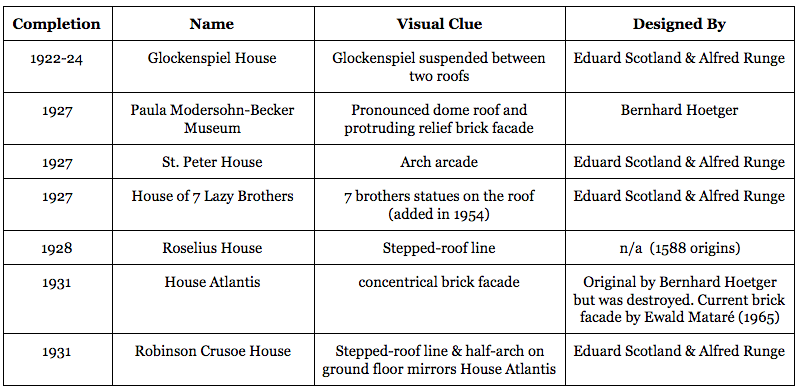
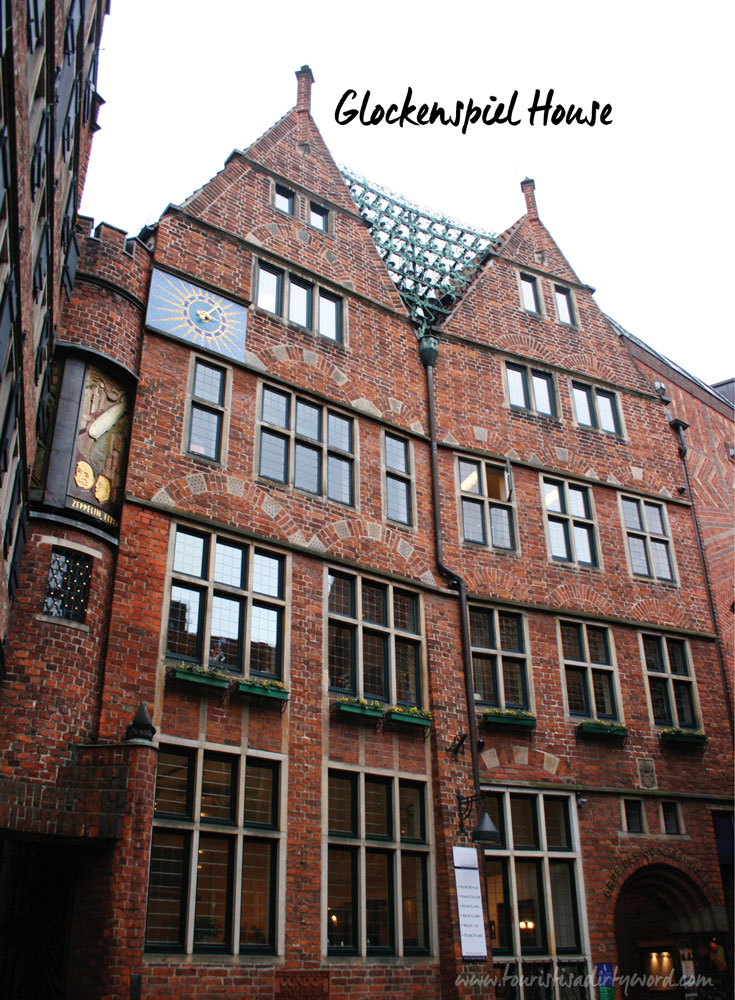
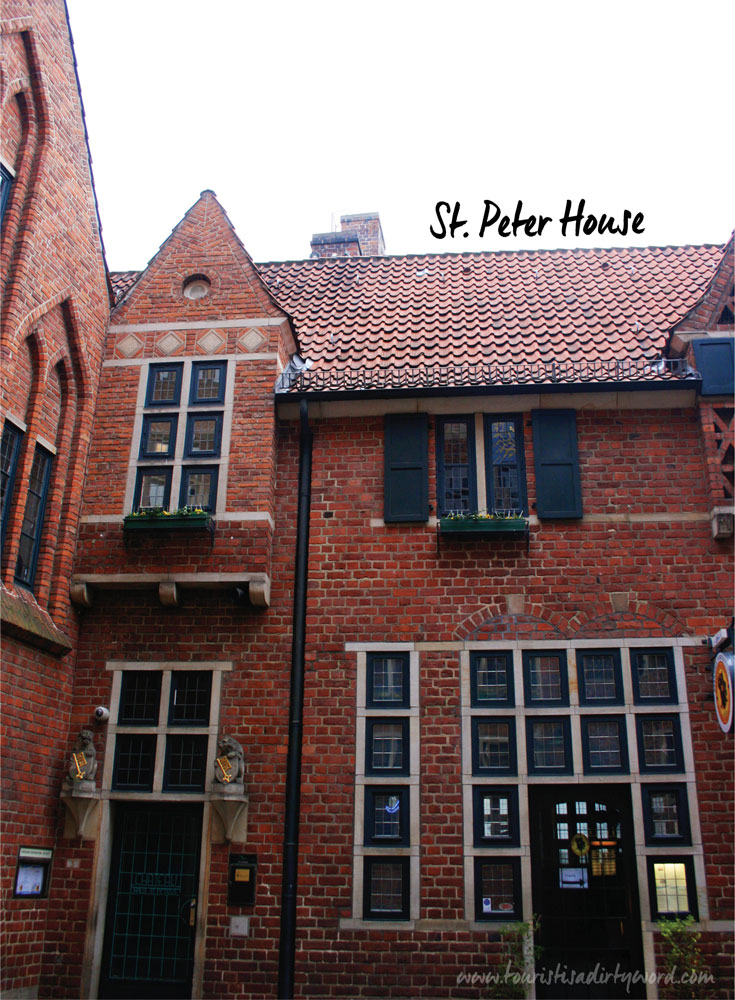
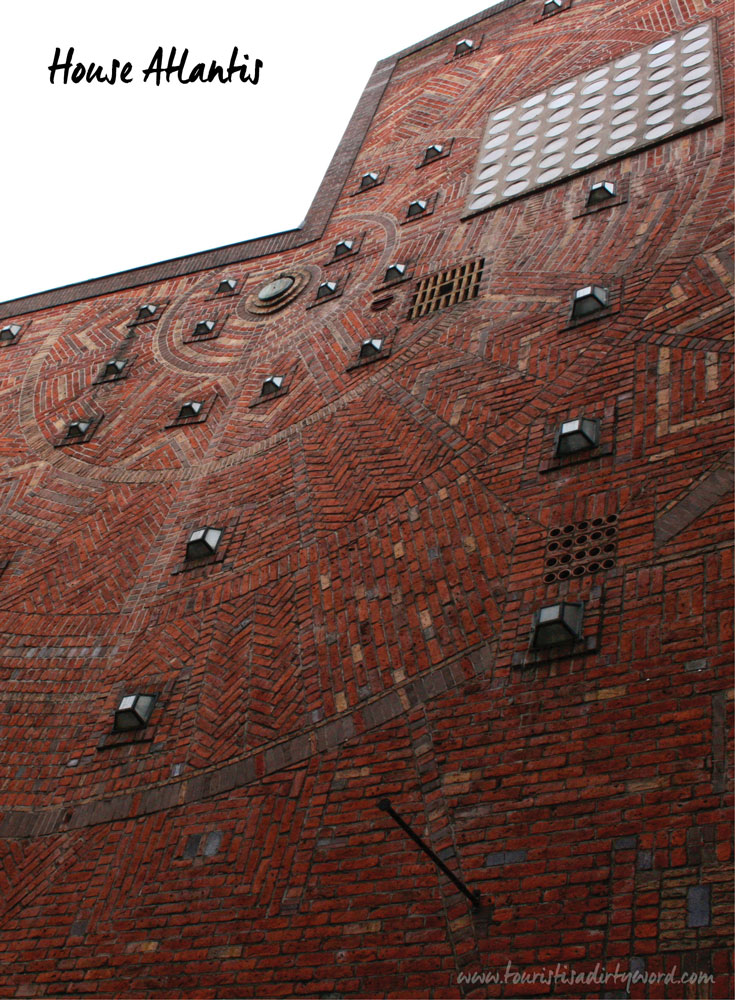
Sadly I'm missing a photo of the House of 7 Lazy Brothers. There's probably a pun in that comment. Do you have a photo of the house you'd like to share? Which one is your favorite?
Follow Along
If you enjoyed this article, or these topics sound interesting to you, you'll love our weekly newsletter. You'll receive a free Germany Packing list for signing up, and you'll receive each week's newest posts every Friday. Thank you for reading!

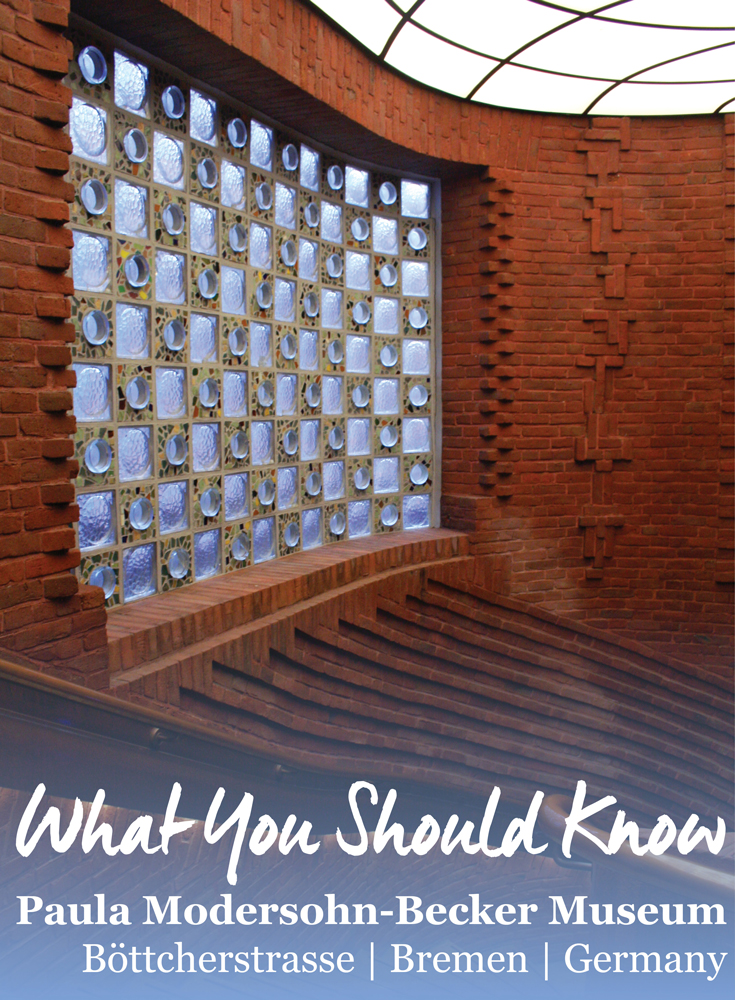
The first museum dedicated solely to a female artist, and the first female artist to do a nude self-portrait.
Paula Modersohn-Becker certainly has my attention!
You might be wondering why you haven’t heard of her before. It is surprising that her life hasn’t been appropriated for a major motion picture or a best-selling historical novel by Susan Vreeland. Paula Modersohn-Becker led a dramatic, full life, with hundreds of paintings to her credit before dying at the young age of 31. Her greatest love in her life was her art, and she battled the same struggle women do today of balancing career with having a family. She married an older man and died a few weeks after giving birth to her one and only child. She documented her life through countless letters and diaries, available even in English (affiliate link).
Often the argument I’ll make for modern art is that it's the first of it's kind, and while something may not be as aesthetically pleasing as we may prefer, it's still notable because it's first. Although Paula's style of work may not be my favorite, to see it up close and in person is something else entirely. Her paintings are so textured that it's impossible to reproduce what they’re like in two dimensional form. You simply must see them. Trust me. She would use the sharp end of her paintbrush to scratch into the thick oil paint, making her paintings sculptural in person. They're visually fascinating.
Paula was moved to paint how a scene felt, rather than appeared. She was trained and capable of reproducing a scene realistically, but she chose to express a scene with shapes, simplicity and feeling. Paula has been attributed saying, translated from German, “I believe that one should not think too much about nature when painting, at least not during the painting's conception. The color sketch should be made exactly as one has perceived things in nature. But personal feeling is the main thing.”
A Closer Look at the Museum's Highlight: Self-Portrait on the Sixth Wedding Day
To be clear, six year anniversary. This life-size, self-portrait demands to be seen. Statuesque, and staring out at the viewer, Paula looks confident, but also as if she's thinking hard. We have history's advantage to know that she was not pregnant when this painting was done. With that knowledge, viewers can make all sorts of guesses and observation as to what Paula's thinking so hard about. This painting is a great example of how she sculpted her paint. The brushwork follows the direction of the form.
My Personal Favorite: Girl in a Birch Wood with a Cat
I'm a loud and proud cat fan, and I'm immensely charmed when I see cats starring in paintings. Girl in a Birch Wood with a Cat easily stole my heart. This painting also stars Paula's favorite tree, birch. I love how the birch tree the girl is leaning against seems to be leaning against the girl as well. The figure holding a baby on the right side of the canvas is mirrored in the girl holding the cat. Is the girl pretending the cat is her baby? Maybe that's the girl's mother behind her, on the right side of the canvas, holding a younger sibling. Maybe the girl wandered off to be alone, taking the cat with her while she pouts? That's what I wonder about when I look at this piece. The pattern on the cat's coat also seems to mirror the pattern of the birch tree. The cat alone looks at the viewer, almost protectively, or perhaps startled. I can easily picture this as a real life scene that Paula observed while at the Artist Colony in Worpswede.
A side note: It seems as though someone at artsy.net made a beautifully detailed scan or photo of both of these paintings, and you're able to see the brushwork clearly. Click either of the paintings to go to their respective pages on artsy, and while your mouse is over the image on that page, the cursor is a magnifying glass, click to see the painting even larger. Its really nice.
Planning Your Trip to the Paula Modersohn-Becker Museum
Follow Along
If you enjoyed this article, or these topics sound interesting to you, you'll love our weekly newsletter. You'll receive a free Germany Packing list for signing up, and you'll receive each week's newest posts every Friday. Thank you for reading!

Does Knowing the History Change How You Feel?
I was surprised to learn while researching this article that the Lichtbringer, Bringer of the Light Relief Sculpture by Bernhard Hoetger was in fact created to HONOR Adolf Hitler!? What?! Looking closely, there's no swastikas, there's no funny little mustache on the sword wielding hero, nothing that would give away that its supposed to symbolize the Nazis triumphing over 'the darkness'. I had hunted this sculpture down, wanted to see it, and its Nazi-linked history wasn't mentioned in my guidebook. Now I feel funny for liking it. Should I not like it? Unfortunately for the artist Hoetger and the sculpture's commissioner Ludwidg Roselius not only did Hitler dislike it, he went so far as to say it was degenerate, that the whole Böttcherstrasse street design was degenerate, and tried to have it torn down.
On that note..
Welcome to Böttcherstrasse
Standing beneath the aforementioned Lichtbringer Sculpture, you're at the entrance to a brick street unlike any you've ever seen. This was once a popular medieval street linking the Weser river to the city market, where the böttcher, coopers, lived. When Ludwig Roselius bought his first Böttcherstrasse house in 1902, he sought to revitalize the street, create a tourist attraction, and provide a headquarters for his coffee brand company. If you've ever had a need or appreciation for decaffeinated coffee, you should thank Roselius for patenting the decaffeination process.
First, I'm going to let you wander through Böttcherstrasse, take in all the sights, and then I'll explain in the following two posts the artist one museum is dedicated to, Paula Modersohn Becker, and later explain brick expressionism and how it relates to the buildings in Böttcherstrasse.



Follow Along
If you enjoyed this article, or these topics sound interesting to you, you'll love our weekly newsletter. You'll receive a free Germany Packing list for signing up, and you'll receive each week's newest posts every Friday. Thank you for reading!

